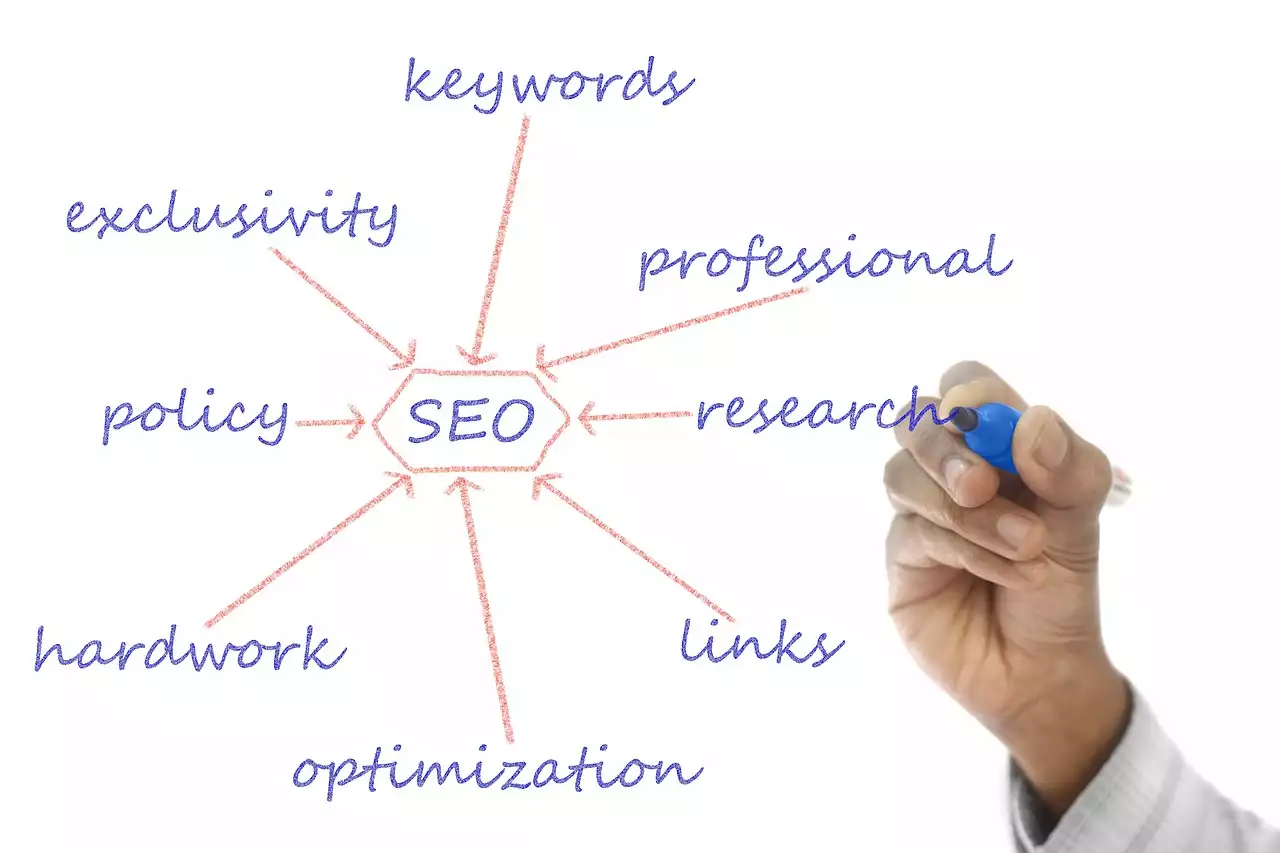Understanding the Importance of Aligning Content Strategy with Business Goals
Before we dive into how to align your content strategy with your business goals, it's important to understand why it's so critical to do so. Your content strategy is the backbone of your marketing efforts, and it plays a key role in your ability to achieve your business objectives. When your content strategy is aligned with your business goals, it helps you to:
Attract the Right Audience
When you create content that aligns with your business goals, you're more likely to attract the right audience. By understanding your target market and their needs, you can create content that speaks directly to them and addresses their pain points. This helps to build a relationship with your audience, which is essential for driving engagement and conversions.
Increase Engagement
When your content is aligned with your business goals, it's more likely to resonate with your audience and encourage them to engage with your brand. This could include commenting on your blog posts, sharing your content on social media, or signing up for your email newsletter. By increasing engagement, you can build a loyal following and drive more traffic to your website.
Drive Conversions
Ultimately, the goal of any content marketing strategy is to drive conversions. When your content is aligned with your business goals, it's more likely to convert your audience into customers. By creating content that addresses your audience's pain points and provides them with solutions, you can build trust and establish yourself as an authority in your industry. This makes it more likely that your audience will take the next step and make a purchase.
Defining Your Business Goals
The first step in aligning your content strategy with your business goals is to define those goals. This might seem obvious, but it's surprising how many businesses don't have a clear understanding of what they're trying to achieve with their content marketing efforts. Without a clear set of goals, it's impossible to create a content strategy that supports them.
When defining your business goals, it's important to make them specific, measurable, achievable, relevant, and time-bound (SMART). This means that each goal should be:
Specific
Your goals should be clearly defined and specific. This makes it easier to know when you've achieved them and to measure your progress along the way.
Measurable
Your goals should be measurable so that you can track your progress and make adjustments as needed. This might include tracking website traffic, social media engagement, or email sign-ups.
Achievable
Your goals should be realistic and achievable. While it's important to aim high, you don't want to set yourself up for failure by setting goals that are impossible to reach.
Relevant
Your goals should be relevant to your business and align with your overall mission and values. This ensures that your content marketing efforts are contributing to your overall success.
Time-bound
Your goals should have a clear timeline for completion. This helps to keep you accountable and ensures that you're making progress towards your goals.
Once you have a clear set of SMART goals, you can start to create a content strategy that supports them.
Identifying Your Target Audience
The next step in aligning your content strategy with your business goals is to identify your target audience. Your target audience is the group of people who are most likely to be interested in your products or services. By understanding their needs and interests, you can create content that speaks directly to them and encourages them to engage with your brand.
To identify your target audience, start by creating buyer personas. A buyer persona is a fictional representation of your ideal customer. It includes demographics such as age, gender, income, and education, as well as psychographic information such as interests, values, and pain points.
Once you have a clear understanding of your target audience, you can start to create content that is tailored to their needs and interests. This will help to attract the right audience to your website and increase engagement.
Conducting a Content Audit
Before you can create a content strategy that supports your business goals, you need to understand what content you already have. This is where a content audit comes in. A content audit is a process of analyzing your existing content to identify what's working and what's not.
To conduct a content audit, start by creating a spreadsheet that lists all of your content, including blog posts, social media posts, videos, and any other content you've created. For each piece of content, include information such as the title, URL, date published, and the number of views, shares, and comments.
Once you have a comprehensive list of your content, start to analyze it. Look for patterns in the content that's performing well and identify any gaps that you need to fill. This will help you to create a content strategy that builds on your successes and addresses any weaknesses.
Creating a Content Strategy Plan
Now that you have a clear understanding of your business goals, target audience, and existing content, it's time to create a content strategy plan. This plan should outline how you're going to create and distribute content that supports your business goals.
When creating your content strategy plan, consider the following:
Content Types
What types of content are you going to create? This might include blog posts, videos, social media posts, email newsletters, and more. Consider what types of content are most likely to resonate with your target audience and support your business goals.
Content Frequency
How often are you going to create and distribute content? This will depend on your resources and the needs of your target audience. Consider how often you need to create content to keep your audience engaged and how often you can realistically create and distribute content.
Content Distribution Channels
Where are you going to distribute your content? This might include your website, social media channels, email newsletters, and more. Consider what channels are most likely to reach your target audience and support your business goals.
Content Topics
What topics are you going to cover in your content? This should be based on your target audience's needs and interests, as well as your business goals. Consider what topics are most likely to resonate with your audience and support your business objectives.
SEO Strategy
How are you going to optimize your content for search engines? This might include using relevant keywords, optimizing your meta descriptions and titles, and building backlinks. Consider what SEO strategies are most likely to support your business goals.
Developing a Content Calendar
Once you have a content strategy plan in place, it's time to create a content calendar. A content calendar is a schedule of when you're going to create and distribute your content. This helps to ensure that you're creating content consistently and that it's aligned with your business goals.
When creating your content calendar, consider the following:
Content Type
What type of content are you going to create and distribute on each day? This might include blog posts, social media posts, emails, and more. Consider what types of content are most likely to resonate with your audience and support your business goals.
Content Topic
What topic are you going to cover in each piece of content? This should be based on your target audience's needs and interests, as well as your business goals. Consider what topics are most likely to resonate with your audience and support your business objectives.
Content Platform
Where are you going to distribute each piece of content? This might include your website, social media channels, email newsletters, and more. Consider what platforms are most likely to reach your target audience and support your business goals.
Publication Date
When are you going to publish each piece of content? Consider what times and days are most likely to reach your target audience and support your business goals.
Measuring Content Success
Once you've created and published your content, it's important to measure its success. This will help you to understand what's working and what's not so that you can adjust your content strategy as needed.
When measuring content success, consider the following metrics:
Website Traffic
How much traffic is your content driving to your website? This can be measured using tools like Google Analytics.
Social Media Engagement
How much engagement is your content receiving on social media? This might include likes, shares, and comments.
Email Newsletter Metrics
How many people are opening your email newsletters and clicking on the links inside? This can be measured using email marketing tools like Mailchimp.
Conversion Rates
How many people are taking the next step and making a purchase or signing up for your service? This can be measured using tools like Google Analytics and your CRM.
Examples of Successful Content Strategies Aligned with Business Goals
To illustrate how a content strategy can be aligned with business goals, let's take a look at some examples of successful content strategies from different industries.
HubSpot
HubSpot is a marketing automation software company that provides tools for inbound marketing, sales, and customer service. Their content strategy is aligned with their business goals of generating leads and increasing customer retention.
They create a variety of content types, including blog posts, eBooks, webinars, and more. Their content topics are focused on inbound marketing, sales, customer service, and other related topics. They distribute their content on their website, social media channels, and email newsletters.
To measure their content success, they track website traffic, social media engagement, email open rates, and conversion rates. Based on their metrics, they adjust their content strategy to create more content around certain topics, distribute content on different platforms, and optimize their content for search engines.
REI
REI is an outdoor gear and clothing retailer that provides high-quality products for outdoor enthusiasts. Their content strategy is aligned with their business goals of providing value to their customers and increasing brand loyalty.
They create a variety of content types, including blog posts, videos, and social media posts. Their content topics are focused on outdoor adventures, gear reviews, and other related topics. They distribute their content on their website, social media channels, and email newsletters.
To measure their content success, they track website traffic, social media engagement, and email open rates. Based on their metrics, they adjust their content strategy to create more content around certain topics, distribute content on different platforms, and optimize their content for search engines.
American Express
American Express is a financial services company that provides credit cards, loans, and other financial products. Their content strategy is aligned with their business goals of providing financial education and increasing customer loyalty.
They create a variety of content types, including blog posts, videos, and social media posts. Their content topics are focused on personal finance, small business, and other related topics. They distribute their content on their website, social media channels, and email newsletters.
To measure their content success, they track website traffic, social media engagement, email open rates, and conversion rates. Based on their metrics, they adjust their content strategy to create more content around certain topics, distribute content on different platforms, and optimize their content for search engines.








.png?size=50)

